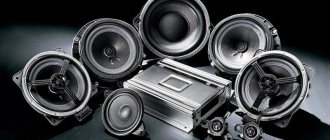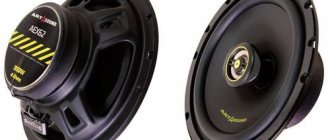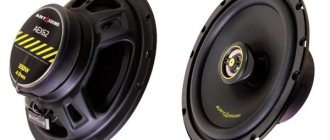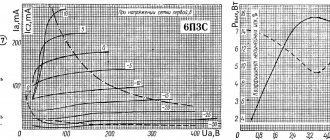Sounds surround us everywhere: people talking, the rustling of nature, car beeps, the roar of technology and, of course, music. In the modern world, it sounds from everywhere: from advertising horns, headphones and televisions, laptops and phones, in general - from speakers. For this reason, the question often arises about the quality and volume of the sound of melodies, the answer to which depends on many parameters of musical devices.
Currently, there are many options for speaker systems and amplifiers on the market to suit every taste and budget, which raises many questions when choosing. But not all devices are compatible with each other due to a number of parameters. So how do you choose the perfect speaker?
One of the important factors is its resistance, which is also called impedance. This concept refers to the total electrical resistance to alternating current, measured at a certain frequency. The standard is adopted at 1000 Hz . Most often, the resistance value is indicated on the magnetic system of the speaker or on the basket; it can also be found in the documentation of the device.
Impedance is measured in units such as Ohms and is subject to Ohm's law, which determines the relationship between the electromotive force of the source and the strength of the current flowing in the conductor and the resistance of the conductor.
So why does the average person need to know what the resistance value is? It is indicated in order to correctly match the speakers with the amplifier when connecting. The general rule is this: speakers will sound quieter if the speaker impedance is higher than specified. This is due to the fact that less current . On the other hand, increasing the volume is possible by increasing the current, that is, a larger value. However, in this case there is a risk of burning out the amplifier (despite the protection against excessive load in many amplifiers, it does not always help to preserve it in the long term).
There are many options for what the impedance of a device can be. However, the most common values for speakers are 4, 6 and 8 ohms. Let's take a closer look at 4 Ohm and 8 Ohm.
Resistance 4 ohms
If the value on the speaker is 4 ohms, then you can connect an amplifier from 4 ohms or more . In this case, there is no risk that it will deteriorate after some time from overload. At the same time, the higher the indicator, the quieter the sound will be.
Frequent advice that can be found is this: if possible, it is better to use a two-coil speaker , in which each coil has an impedance of 4 ohms. In this case, there are always several options for using such a speaker. When connected in parallel to an amplifier: 4*4/4+4=2 Ohms , when connected in series: 4+4=8 Ohms and when using only one coil, a value of 4 Ohms will be obtained. This way you can get different impedance options and use the same speaker in conjunction with different amplifiers.
Which speakers are better 4 ohm or 8 ohm?
See also reviews and articles:
- DIY sound amplifier
- Types, types, pinouts and installation method of network connectors
- How to choose terminal blocks for connecting wires: types and types of terminal blocks
Every music lover and just someone who likes to listen to their favorite music with excellent sound at home or in the car, sooner or later, when choosing music speakers, is faced with the need to choose the speaker impedance: which speakers are good at 4ohm or 8ohm?
There is a difference in the sound of these speakers and amplifiers. Speakers with a higher nominal impedance have less resistance to the output signal and, accordingly, give a smoother and more honest sound in terms of frequency response and other characteristics.
Large resistance, by the way, is used in the studio in high-quality equipment. For example, there are models of studio headphones that have an impedance of 600. That is, the higher it is, the less the signal is distorted.
Obvious differences in speaker impedance
Which speaker to choose, 4 ohm or 8 ohm, depends on many factors and the purpose of the speakers themselves. Four at the same time give a good damping factor and the amplifier operates at full power, but 8 ohms is made so that 2 pieces can be connected in parallel. In certain situations, it makes no difference whether you buy 8 or 4 ohm speakers. Simply, if you have a power of 500 watts in a device for eight-ohm speakers, then you will already need an amplifier that has 2 * 1000 in 4.
Simply, if you have a 4 ohm speaker with, say, 1000 watts of power, then the amplifier will cost less. And if you choose 8, it will be more expensive. This means that for music speakers for 4 you need to take twice as powerful - 2 x 2000 W. However, with this scheme, the amplifier may fail due to overload. Then it will be easier to connect 8 ohms in parallel, because not every amplifier operates in 2-ohm mode.
Speakers and subwoofer
If the speakers are used for subwoofer, it is still better to purchase eight speakers. Then there is a difference, which speaker will sound good, 4 or 8 ohms, and it is significant. If the speaker is 8, then it will have a higher BL parameter. Namely, this parameter is very important for subwoofers. And the bigger it is, the better. Well, there’s one more factor. It is possible to put two subwoofers in parallel on one amplifier. After all, all amplifiers are designed for 4 ohm loads.
In terms of power, if the subwoofers are 800 watts each, then the amplifier must be at least 2 with 900 watts of power or more powerful. This is due to the fact that when the speaker is operating, its resistance increases quite significantly, and therefore it is more difficult for the amplifier to keep it in nominal mode.
And on a 700 W 4 Ohm module you can “plant” either one speaker with an impedance of 4-8, or 2 speakers with 8 Ohms. That is, you can make one active sub with a power of 350 W 8, with a 700 W 4 Ohm module, and one passive 350 W 8, or one active 700 W 4.
At the same time, the speakers at 4 are better revealed. It is worth accurately measuring the vehicle, especially carefully the quality factor and equivalent volume, then the frequency response of the dynamics in the near field (microphone almost close to the speaker, “pink noise” signal).
Bass dynamics
This allows, taking into account its own frequency response dynamics, to adjust the AO in such a way that the simulated frequency response in the calculation program compensates for the peculiarities of the frequency response dynamics. For example, if a speaker has a low bass roll of 40-60 Hz relative to the upper bass of 60-120 Hz, you need to increase the volume, increase the FI output, and try to tune it lower in frequency length. And do the opposite if there is more lower bass than upper bass. This is all well modeled in programs.
There are a lot of nuances in setting up different types of AO, as for the direct comparison of the labyrinth, FI, PR (as the types of AO are similar in operation), then with the labyrinth there is little freedom of action when setting up, and besides, the case is complex and has the largest dimensions. But there are rare cases when it can really come in handy. For speakers with very low Qts (if it is not desirable to increase it, for example, by series resistance), when with other types of AO there is a blockage in the bass.
In short, there is no definite answer to which speaker sounds good, 4 or 8 ohms - it all depends on how powerful your amplifier is, where the device will be used, how it is powered and connected.
Published: 2020-11-07 Updated: 2021-08-30
Author: Electronoff Store
SUITABLE PRODUCTS
- Banana acoustic plug, metal body gold, black 3 reviews
Buy
28 UAH
Code 3606
in the shop
- Acoustic cable 2x14.12mm (0.16mm.kv), dia. 2, 0x4mm, transparent, 100m 1 review
Buy
186 UAH
Code 4090
in the shop
- Acoustic cable 2x7.12mm (0.088 mm.kv), diameter - 1.6x3.2mm, transparent, 100 m 2 reviews
Buy
118 UAH
Code 4088
in stock
- Acoustic cable 2x14.12mm CU (0.16mm.kv), diam-2, 0x4mm, transparent, 100m 1 review
Buy
267 UAH
Code 4089
in stock
- Acoustic cable 2x20.12mm CU (0.23mm.kv), diameter 2.2x4.4mm, transparent, 100m 1 review
Buy
476 UAH
Code 4091
in stock
- Acoustic cable 2x20.12mm (0.23mm.kv), diameter 2.2x4.4mm, transparent, 100m 1 review
Buy
348 UAH
Code 4092
in stock
- Acoustic plug Banana, silver-gold, diameter 4 mm 0 reviews
Buy
45 UAH
Code 3608
to order
- Acoustic plug Banana, gold, metal body, D-10 mm 0 reviews
Buy
39 UAH
Code 3609
to order
- Acoustic cable 2x7.12mm CU (0.088mm.kv), diameter 1, 6x3.2mm, transparent, 100m 0 reviews
Buy
264 UAH
Code 4087
to order
- Acoustic cable 2x28.15mm (0.5mm.kv), diameter 2.6x5.2mm, transparent, 100m 0 reviews
Buy
1308 UAH
Code 4094
to order
Share on social networks
Comments on the article “Which speakers are better 4 ohm or 8 ohm?”
- Evgeniy 02/14/2022 18:35
Thank you, I read the article with great pleasure, otherwise I honestly didn’t even know the difference in the speakers, apparently a fraction of that.Rating star star star star star
Leave your comment
Error
Resistance 8 ohms
In this case, by connecting devices with an impedance value higher than 8 to an 8 Ohm speaker, the resulting volume level will decrease, in addition, this does not carry a significant risk of damage to the devices themselves. In this case, connecting devices with lower resistance will lead to possible speaker overloads.
Drawing a conclusion from the above, one must understand that the maximum permissible power will be obtained with the volume control in the middle position . If you set large values, there is a risk of breaking the amplifier or the speakers themselves. Therefore, before use, it is worth deciding at what position of the volume control the amplifier will reach the maximum permissible power with these speakers and try not to set the volume value higher than permissible. This way the device will last longer.
Comparison
When choosing a value, you should be guided by the following rule: the higher the electrical resistance parameter, the easier it is for the amplifier. The chances that it will burn out are much less, since it heats up less. It also reduces the output power to the driver and improves sound quality.
So, when choosing a 4 Ohm amplifier, the choice of amplifier is more varied, since you can use those whose parameters also start at 4 Ohms. In this case, the amplifier will heat up more, although when compared with 8 ohms this is not the most critical indicator.
If you want to increase sound quality, then you should take speakers with a resistance of 8 ohms, but it is worth considering that this works under other equal conditions, that is, the sensitivity and power of the speaker are equal, which is extremely rare in practice. Often, either a speaker is selected for a specific amplifier, or, on the contrary, there is a need to purchase an amplifier.
Operating an amplifier in extreme conditions, for example, constant, high volume, can cause overload much stronger than a mismatch in speaker impedance. Therefore, it is also worth considering the conditions in which the device will be used.
What to choose
To summarize, we can say that the speaker impedance value will not tell you anything specific and accurate about the sound quality. Manufacturers set this parameter so that impedance is taken into account when connecting the speaker and amplifier.
If the impedance is below the recommended load value of the amplifier during playback, sound distortion , or short circuit protection may come into effect; if higher than the recommended resistance, the sound will be much quieter. However, better control of the speaker sound is easier to achieve with a high parameter value and an appropriate amplifier.
So, for speakers used by music connoisseurs, where sound quality comes first, 8 Ohms are chosen. Where power is more important, the choice is made in favor of 4 Ohms.
But the most important thing is that when choosing, it is better to focus on the values indicated on the amplifier in order to correctly match the resistance, and not strive for one specific value.
Electronics and technologyComment
Speaker impedance, which parameter to choose
Acoustic systems consist mainly of power amplifiers, frequency crossover filters and loudspeakers.
The bandwidth is 20-20,000 Hz. Power amplifiers are broadband and divided by frequency range.
- Low frequency (20–300 Hz).
- Mid-frequency (300–5000 Hz).
- High frequencies (5,000–20,000 Hz) belong to the 3-band class.
2-way amplifiers have two frequency ranges: LF-MF and HF. The input signal is distributed by filters across frequency channels and fed to the corresponding amplifiers.
To calculate crossover filters, radio amateurs need to know the input impedance at different frequency ranges. For low frequencies, the active impedance of the loudspeaker is 4 or 8 ohms. The impedance can be taken to be approximately 10% of these values.
You can measure it by connecting an audio frequency generator tuned to the crossover frequency (not lower than 6 kHz) through a 1 kohm resistor to a loudspeaker. The ratio of the voltages across the resistor and loudspeaker will show the desired value. The impedance of the high-frequency head is determined in the same way.











